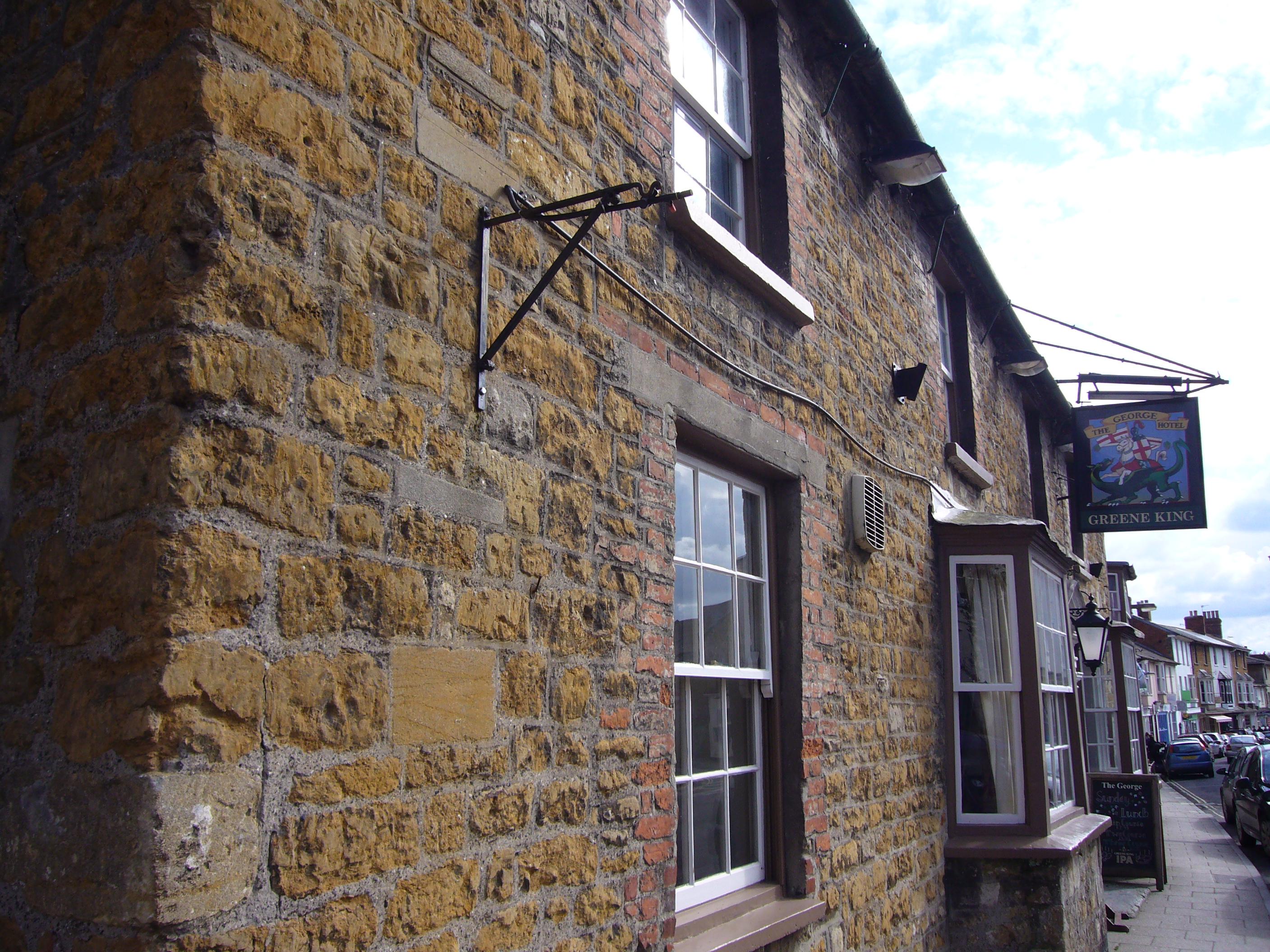George, Castle Cary

The George stands in the centre of Castle Cary. It was first recorded in 1686 when it was probably new.[1] Its great chamber was used for interrogating a suspected thief in 1715, possibly the chamber whose furniture including a desk belonged to the lord of the manor in 1729.[2] The building belonged to the Farewell family in the early 18th century.[3] During the later 18th century it hosted election dinners and parish meetings and was the excise office and was described as tolerable.[4] In 1842 there were nine bedrooms, two kitchens, and stabling for nearly 100 horses.[5]
The L- shaped hotel, which remains in business opposite the Market House, is built of Cary and lias stone under a thatched roof, and dates mainly from the 18th and 19th centuries. A datestone (1673) and a gateway with a stone plaque of St. George and the Dragon were removed in the later 19th century: The front wall incorporates some possible early medieval decorated stones.[6] It was completely altered internally after partial destruction by fire in 1845 and new extensions were added to the rear, one dated 1845 with F. W. Harrold’s initials, replacing the destroyed assembly room.[7] [1] SRO, D/P/cas 4/1/1; ibid. Q/SR 227/13; Castle Cary Visitor Feb., April 1897.[2] SRO, Q/SR 273/4; TNA, PROB 3/29/62.[3] SRO, DD/BR/hk 1.[4] Ibid. A/AQP 9; Beresford, Diary of a Country Parson, I, 71, 84.[5] Castle Cary Visitor Nov. 1902; Dec. 1903. [6] Ibid. Feb., April 1897; Miller & Laver, Castle Cary, North Cadbury, and Wincanton, 24; SRO, tithe award; O.S. Map 1:10560, Som. LXV. NW (1885 edn). [7] Castle Cary Visitor April 1897; SRO, tithe award and map.Copyright:
University of LondonImage Caption:
George, Castle Cary